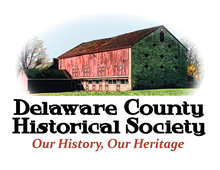Delaware On The Map: The Beginning

March 9, 2020 original post
This spring, we begin a new series, “Delaware On The Map,” which looks at how local history is revealed on maps — maps of the area, county, and nation.
Students of local lore will know that the city of Delaware had its origins in 1804 when Moses Byxbe came to central Ohio from Massachusetts. Four years later, he laid out a town on the east, then the west bank of the Olentangy River.
Some months before, the Ohio General Assembly had created Delaware County.
The population grew quickly. In 1810, the county’s population was about 2,000; by 1820, it had risen to over 7,000.
It is during this period that the map we highlight today was created. Entitled “Map of the United States with the contiguous British & Spanish Possessions,” it was produced in 1816 by John Melish in Philadelphia, just 8 years after Mansfield’s founding. It is accessible via the online collection of the David Rumsey Map Collection and can be accessed at this link.
It is possible to zoom in and out on this map either by clicking the bar in the middle of the map, or by using the wheel on your mouse.
This map of Ohio has several interesting aspects. For one, the list of settlements in this area is quite limited; Worthington, Franklinton, and Columbus are the only ones named in today’s Franklin County. Some place names have changed. Lower Sandusky, which is above Upper Sandusky, is now known as Fremont, and of course “Bixbie,” north of Worthington, is likely the location of what is now the city of Delaware.
A quick glance to the north shows the pre-Toledo War boundary of Ohio and Michigan.
As the map legend states, this is the first edition of this map which included the location of Delaware. As such, it may be the first of its kind.
About 1808Delaware
1808Delaware is a Total|Local Media site for and about Delaware County Ohio. It offers news and information that tap into the energy of residents, businesses, organizations, and institutions.
Total|Local Media sites look and function differently than many other news sites; Organic News Coverage, Good Journalistic Writing, Strong Curation, Local, really and only local.
